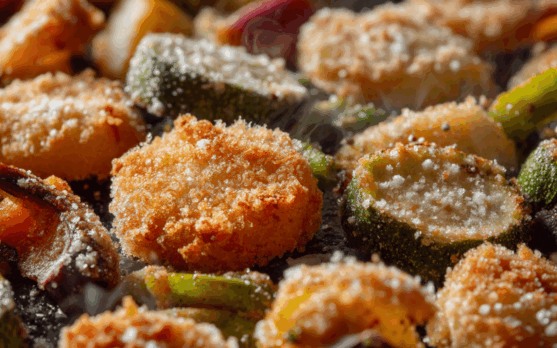“What Comes After Sustainability?” — The Next Frontier of Consumption
Sustainability was the buzzy hope of the past decade—green labels, carbon pledges, compostable packaging. But what happens when every brand shouts “eco”? In this bonus episode, we explore what lies beyond sustainability: fresh consumption frontiers where meaning, emotion, spirituality, identity—and yes, technological wonder—take over.

We’ve all seen the shelf full of recycled-packaging goods stamped “eco-certified.” And we cheer... until we realize that everyone’s doing it. When sustainability becomes baseline, it stops being a differentiator. And people begin to search for the next meaningful layer of connection.
So what’s coming next? Well, not a replacement of green efforts—more like an evolution. Brands that want to stand out are starting to layer new values on top of ecological credentials. They’re building emotional bridges, experiential depth, and spiritual engagement. And yes, technology is helping them do it.
First up: emotional weaving. Remember how food used to be comfort? That need didn’t vanish—it got repackaged. Brands are now embedding stories that go beyond origin or process. Imagine packaging that doesn’t just say “100% organic”—it says “crafted by grandmothers in coastal villages.” Or frozen soup that opens with a poem on the inside of the lid.
Then there’s spiritual resonance. In many cultures, food has always had a sacred component—blessings, rituals, intentional preparation. We’re seeing that come back under a new name: mindfulness in eating. Think of single-serve frozen bowls wrapped in biodegradable paper with a simple mantra printed on it. Food as meditation.
Next, creative personalization becomes table stakes. Not just “your biology” personalization but “your self-expression.” Frozen meals you choose because they align with who you want to be—adventurous cook, wellness seeker, nostalgia hunter. That means flexible lines: “Retro comfort from the ‘50s,” “Amazonian adventure blends,” “Upgraded childhood flavors.” Consumers want products that speak their identity back at them.
There’s also an emerging layer of multi-sensory design. Packaging is scented. Labels feature textures you can feel. Frozen meal lids crack with a satisfying snap before opening. Because experiences matter as much as ingredients. If product A smells like vanilla when you open it, and product B feels smooth in your hand, that impact lingers—long after the last bite.
And then: technological wonder. Think AR overlays when you scan the package—animated illustrations, meal prep videos, even small rituals like a chef’s greeting. Or QR codes delivering ambient sound or meditation music timed with the cooking time. It’s not virtual reality—it’s immersion in real moments.
All these layers go beyond just being green. They’re about creating a moment. A pause in a busy day. A connection with culture, emotion, or ritual. It’s a design strategy disguised as consumption—but deeply human in its aim.
Of course, this isn’t for all products. Some remain plain, functional. But others—especially in frozen niche, gourmet, or wellness lines—are embracing this layered meaning. And consumers notice.
We’re already seeing boutique brands that use wildflower-scented film or hand-drawn art. Others embed a code that plays soft music when scanned. The result isn’t sales spikes—it’s loyalty rooted in memory and feeling.
What’s key here? Authenticity. Because if you slap a poem on a $2 frozen dinner without a real story, people will feel it. They’ll post about it—in critique. But when little rituals are real—when packaging is thoughtfully designed, when scent tells of harvest—they become collectible. They become a ceremony in daily life.
It’s not just about winning hearts. It’s about recalibrating what consumption means. When people start craving connection over calories, when they want experiences over excuses, it changes everything. Ecology becomes emotional ecology. Convenience becomes careful curation. Nutrition becomes nourishment beyond nutrients.
And as brands layer these dimensions, they also layer resilience. In a crowded marketplace, being meaningful becomes a strategy. Not expensive, but intentional. It creates relationships—with consumers and within their routines—that aren’t based on deals, but on shared values.
In that sense, what comes after sustainability isn’t abandonment—it’s amplification. It’s saying: we’re green, yes—but we are also kind, playful, soulful, creative, human. And our products reflect that at every touchpoint.
That, ultimately, becomes the next frontier of consumption. Where value isn’t just price or planet, but presence. Where frozen meals aren’t transactions—but moments of connection. And that’s a food future worth investing in.
Part of the series: GLOBAL CONSUMPTION — The 7 Waves
Explore the full editorial journey through seven powerful shifts redefining how we eat, shop, and connect.
Conclusion
The post-sustainability wave isn’t a turning away from environmental values—it’s a turning toward deeper meaning. Emotional resonance, spiritual design, personal connection, sensory delight—they’re the new criteria of thoughtful consumption. Brands that embrace this will cultivate devotion, not just transactions.
Essential Insights
When sustainability is table stakes, meaning becomes the meal. The next win in consumption lies in emotional depth, ritual, design, and authentic presence.




